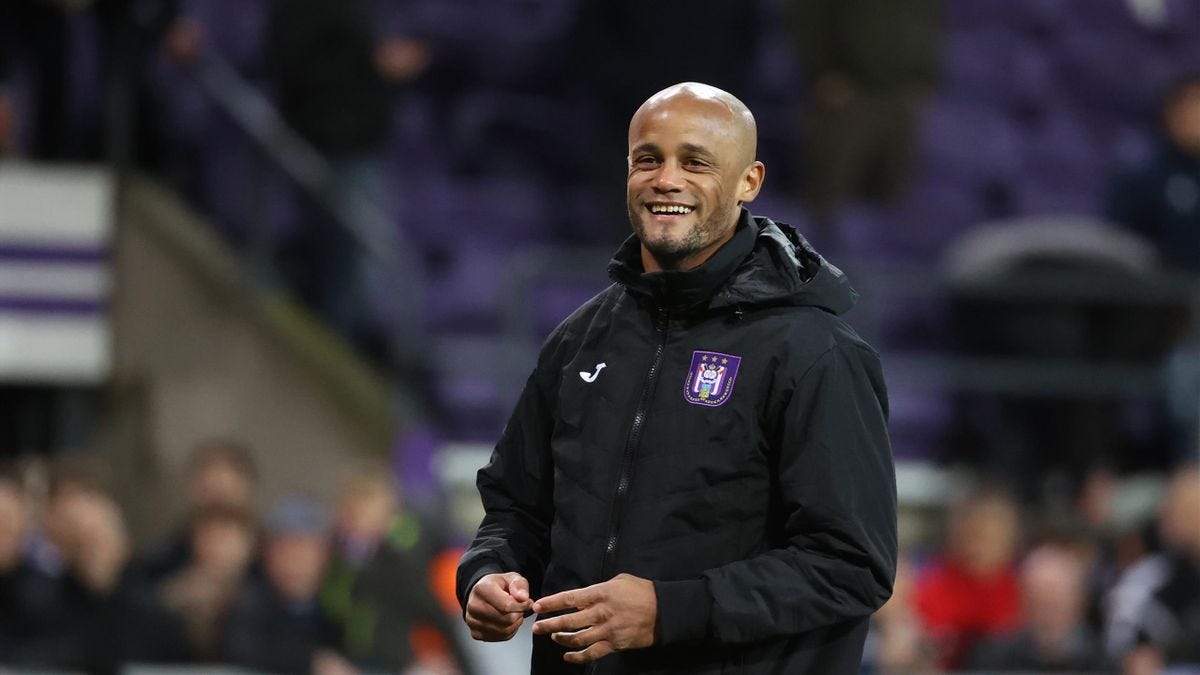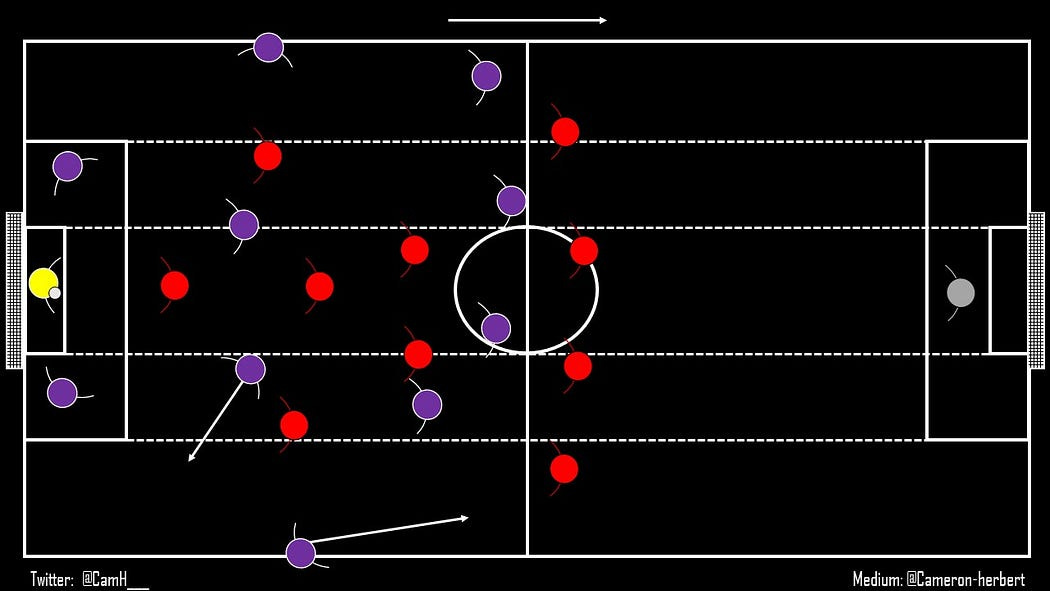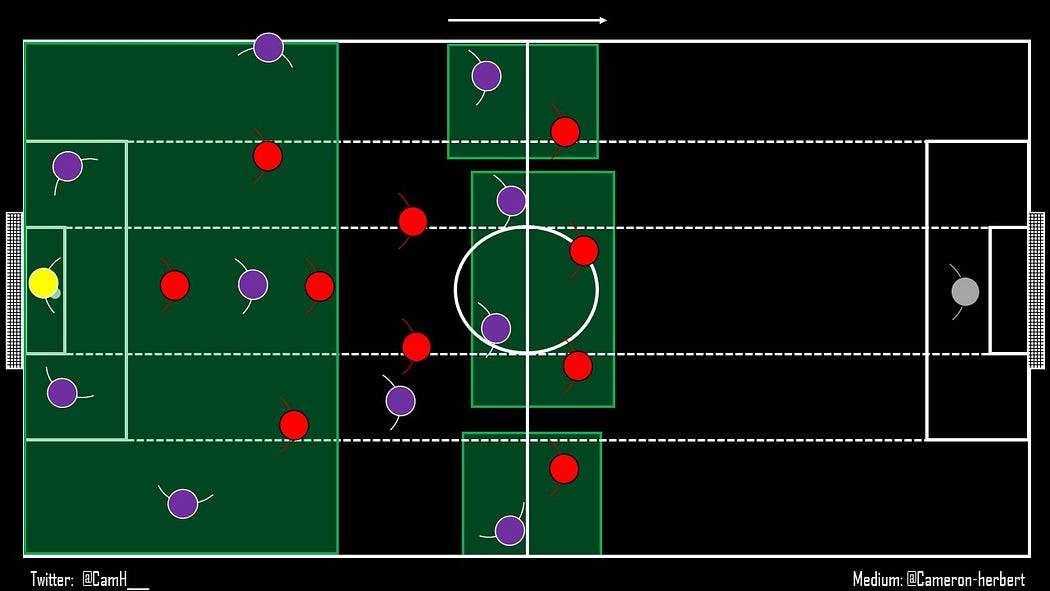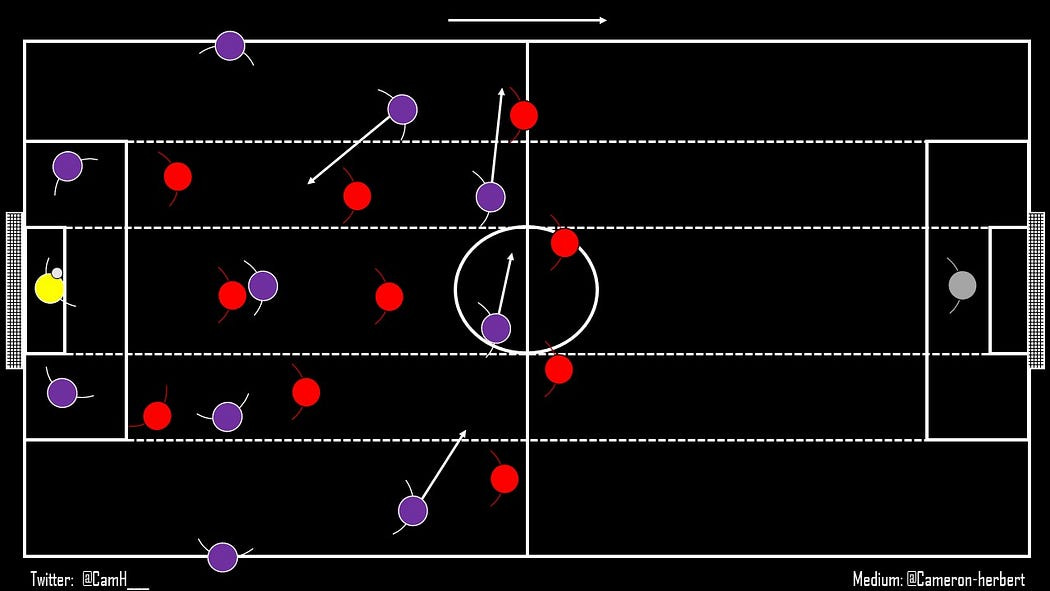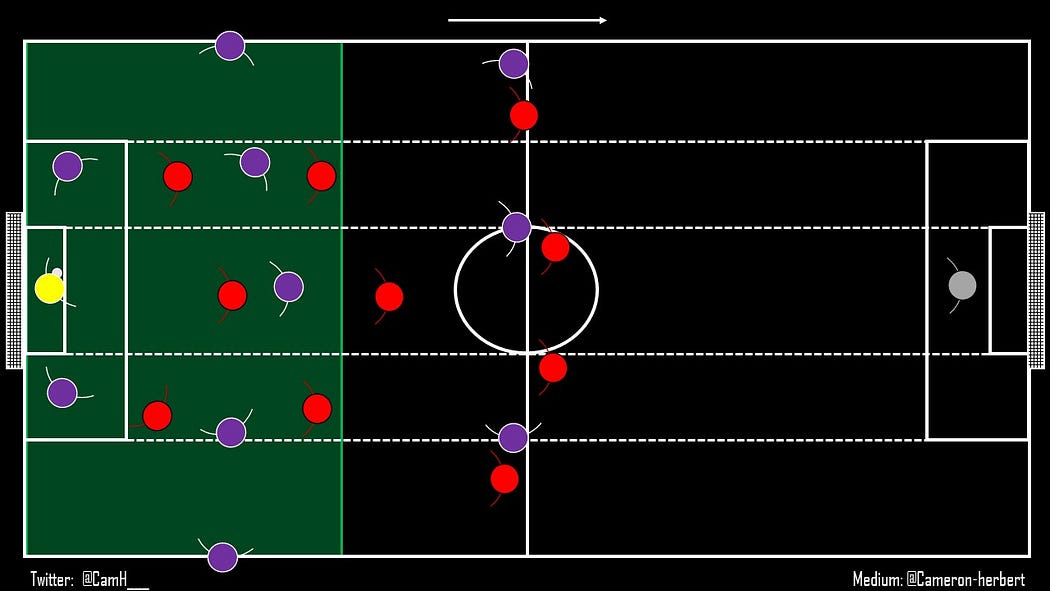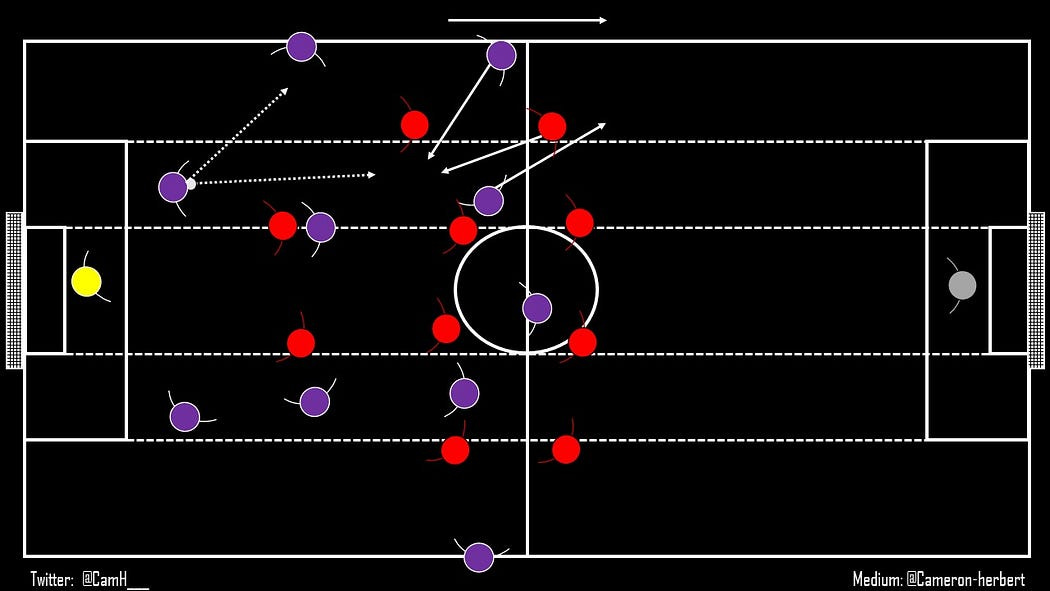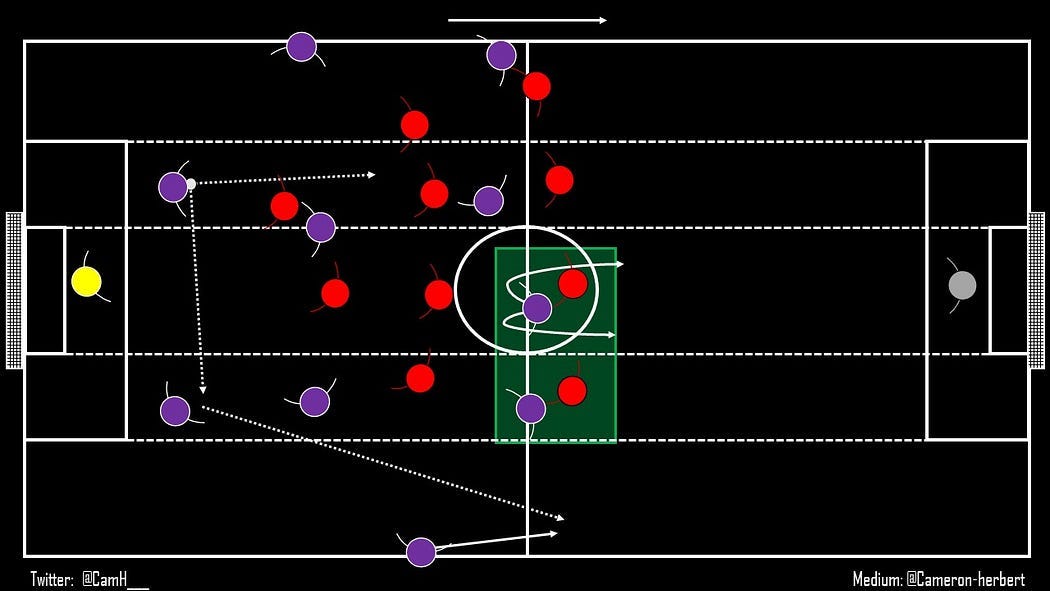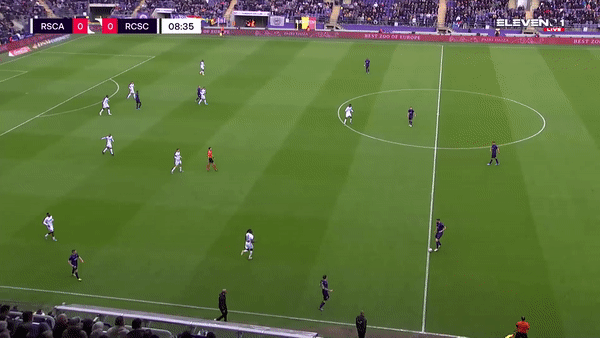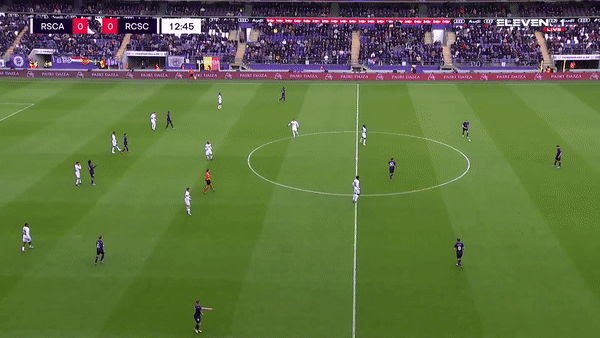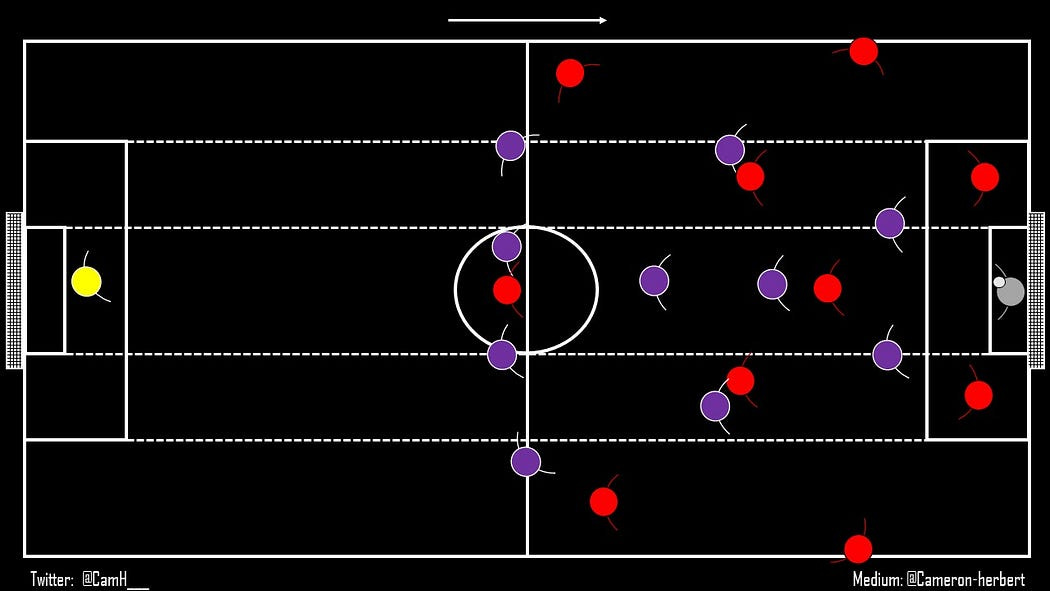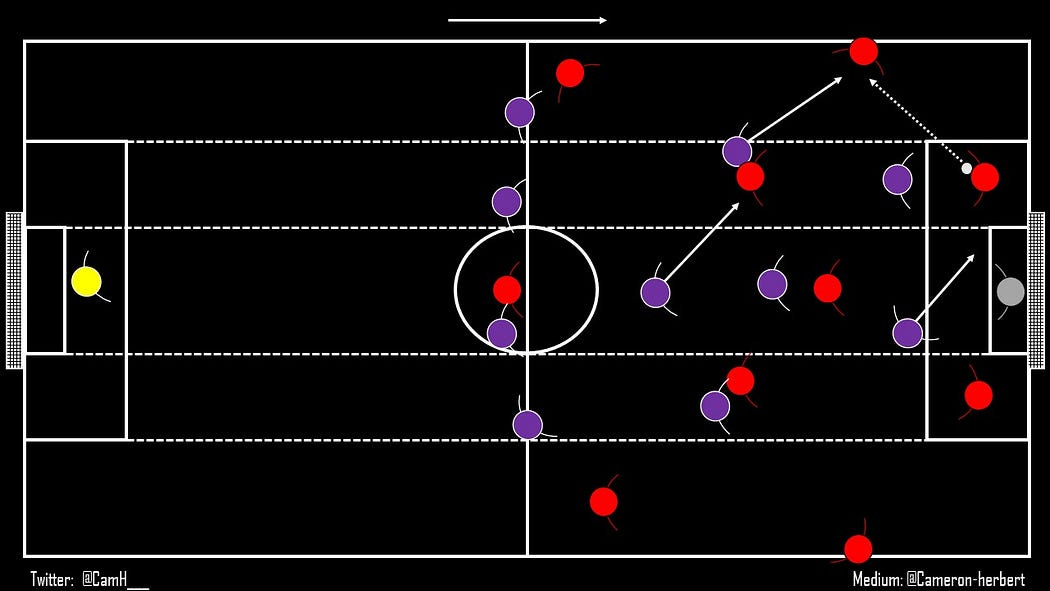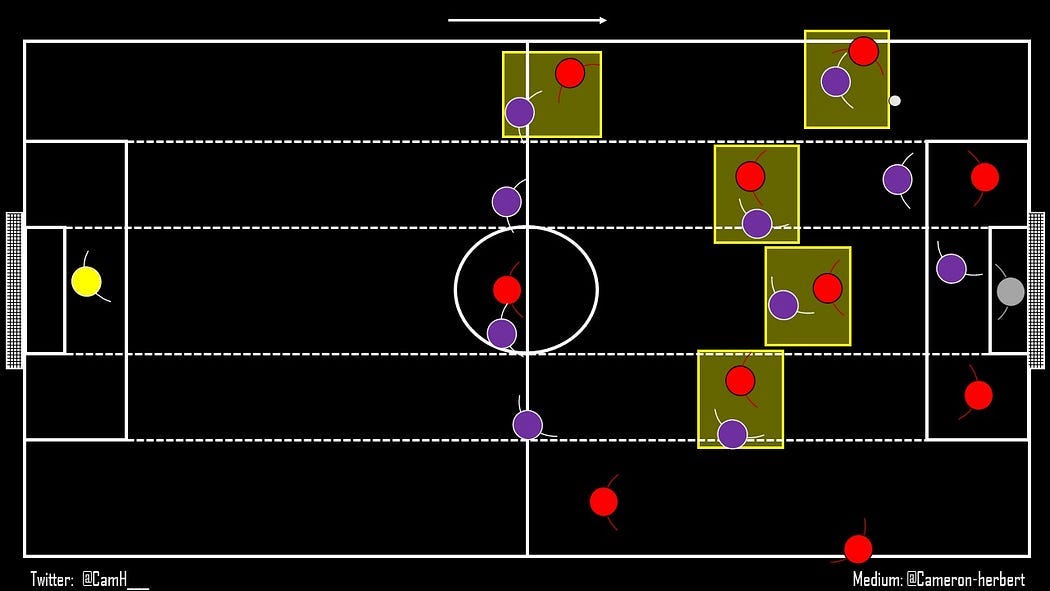Vincent Kompany & Anderlecht — The Precursor to Burnley
Vincent Kompany has gotten Burnley to the Premier League. However, before he rampaged the Championship with Burnley, he applied his ideas in Belgium with Anderlecht.
Under the leadership of Kompany, Anderlecht played an entertaining, high-tempo, modern brand of football. They were blessed with athletic, technical players, capable of playing one or two touch football, with an emphasis on player movement and fluidity off the ball.
Before we go any further we ask that you like this post. By liking this post (click the heart button) The Weekly Rondo publication will be shown to more people by Substack.
Fluid Build Up
Anderlecht will built up from goal kicks with four players in their backline and two pivots. The use of these pivots will vary depending on the intensity of the opposition press.
If the opponent did not press intensely, Anderlecht will have one of the pivot players, typically Kristoffer Olsson, drop into the back four while the right-back Murillo pushes forward and joins the forward line.
There is an obvious numerical superiority from goal kicks. Anderlecht try to play from defense like a modern football team. How they react to the options in front of them after beating the first line of the press is interesting.
Anderlecht have several pacey, technical players. They can create several qualitative superiorities against the opponents backline using this structure from goal kicks and build up.
They isolate the opponents full-backs with the wide players Murillo and Rafealov, while the strikers pin the center-backs and look for space to run into, behind the backline.
Against an aggressive pressing team, Anderlecht will keep both pivot players central while the ball sided wide player drops into the ball sided half space to create a sort of 4–3 build up.
Anderlecht players will move into different positions on the pitch in order to make sure that there are available passing options. Qualitative superiority, going forward, is often an effective approach to rely on. However, it cannot be relied on in their own defensive third and middle third.
The above shows how the ball side forward wide player will drop into midfield to act as another passing option, while the remaining forwards spread out to add width in the event of a long ball opportunity presenting itself.
Despite playing highly technical and fluid football, Anderlecht are not shy of using direct, long passes, to switch the side of an attack, once again taking advantage of their qualitative superiorities.
Midfield Rotations and Ideas
The most common method of ball progression is through the left side, via off the ball movements from the left sided striker and left-winger.
The left-winger would drop into the left half-space while the left sided striker will run into the space previously occupied by the left-winger. This is done because, in most cases, the defending right-back will follow Anderlecht’s left-winger as they drop deep, leaving space behind them.
The target is seldom the left-winger, Anderlecht do this to find space their left sided striker, usually Kouame or Amuzu, is running into.
If Anderlecht struggle going down the left side, they will switch the ball to the right full-back who has taken up the position of a natural right-winger.
Kompany trusts the ability of his players to take advantage of their qualitative superiorities in one versus ones and two versus twos.
Due to the width and pace that Murillo provides, the starting right-winger Vershaeren is able to come inside and play in a position you would normally see a traditional number 10 playing in. He is given freedom to roam and create link up plays where possible.
Put simply, when maintaining possession in the middle third, Kompany sets his team up in a very fluid 4–2–2–2 at the start of sequences, allowing them to move freely around the pitch as they see fit. Due to the fluidity, it can mold into a sort of 3–2–5 shape. However, it’s hard to see any shape for long due to how often the Anderlecht players move off the ball.
Vershaeren will drop into midfield in an attempt to drag a marker with him, creating space for his teammates to run into, or look to receive the ball and create something himself.
This is a similar movement that the left-winger is given freedom to do, and a movement Anderlecht players as a whole look to exploit.
Out of Possession
Vincent Kompany prefers a very high press. The evidence is from attacking team short goal kicks. Anderlecht would commit several numbers forward to either force a turnover or long goal kick.
In addition, Anderlecht were persistent counter-pressers and are relentless in trying to win the ball once they lose it.
Against short goal kicks, Anderlecht will press in a 4–4–2 diamond. The nuance is seen when the ball is played and we see the Anderlecht forward players making decisions.
Anderlecht can almost force the attacking team to pass to their ball sided full-back, making it very simple to predict which passing options the attacking team will want to use, and then marking them tightly.
In fairness, it isn’t always effective in winning the ball, but it does put the attacking team under an incredible amount of pressure where mistakes are inevitable.
When teams decide to use long goal kicks, Anderlecht set up in a 5–3–2, with Olsson dropping into the back line.
Where he could improve
Vincent Kompany and Anderlecht will get caught playing poorly or sloppily. This can be a consequence of playing a very technical brand of football with players who may not be able to participate consistently.
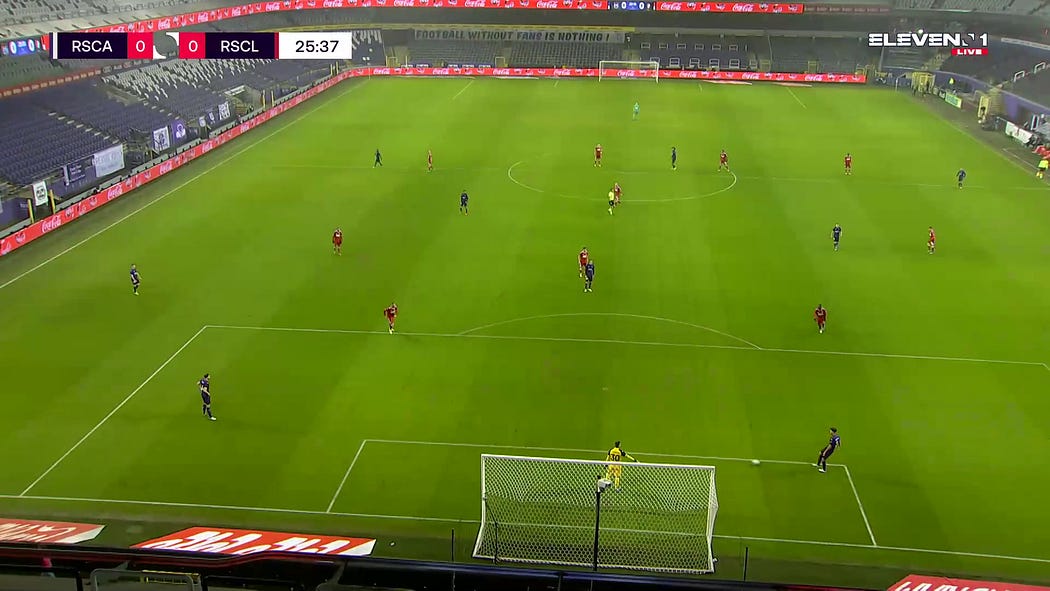
However, these blemishes are largely due to tactical errors rather than technical ones. Kompany will use a similar short-kick set up against different opponents. Normally, for technically elite teams, this isn’t an issue. However there are very few Man City’s, Liverpools etc in the world.
Failure to adapt to different pressing structures is likely due to inexperience from both the manager and players.
Vincent Kompany and Anderlecht played eye-catching football that requires athleticism, technical ability and an ability to create qualitative superiorities. With Anderlecht being Kompany’s first role in management, it’s hard to say if he knows how to adapt or even wants to adapt.
Having said that, these are the very few shortcomings from a manager who has otherwise performed well at implementing an entertaining brand of football.
How will Vincent Kompany do in the Premier League with Burnley?
Final thoughts
Vincent Kompany left Anderlecht with experience of how to implement an exciting style of football with a group of technically adequate players.
After joining Burnley, Kompany smashed the Championship comfortably.
He shows clearsigns of a coach who was inspired by Pep Guardiola. Fluid, positionless play, relentless pressing, a need for technical excellence, the works.
Supporting The Weekly Rondo
We’re glad to have readers like you who support our work.
If you’d like to support us further, consider referring a friend to earn a free subscription to our paid newsletter.





